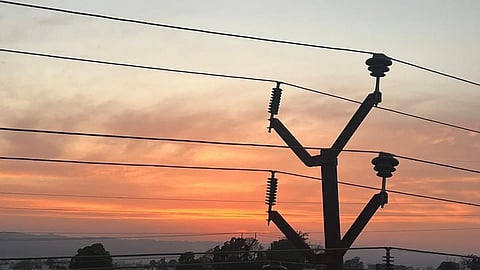

New Delhi: The Ministry of Power has released the draft Electricity (Amendment) Bill, 2025, proposing the most sweeping changes to India’s power law since 2003. The draft, open for stakeholder comments for 30 days, makes cost-reflective tariffs mandatory, empowers regulators to revise tariffs suo motu if utilities delay filings, and seeks to progressively eliminate cross-subsidies for industries, railways and metro systems within five years.
Follow Energy Watch on X
The ministry said the amendments are aimed at ensuring “affordable, reliable, and clean electricity for all” while securing the financial viability of discoms and aligning India’s power sector with the vision of Viksit Bharat @ 2047.
The draft bill makes it compulsory for electricity regulators to ensure that tariffs reflect the actual cost of supply. If a generating company or discom fails to submit a tariff petition in time, the regulatory commission can determine tariffs on its own so that new rates come into effect from April 1 of the next financial year.
The proposal follows a Supreme Court judgment (BSES Rajdhani Power Ltd & Anr vs Union of India & Ors, 2025 INSC 937) which held that non-cost-reflective tariffs were eroding the financial sustainability of the power sector. State governments may, however, continue to extend advance subsidies to certain consumer groups to keep tariffs affordable without burdening discoms.
The draft mandates that cross-subsidies for manufacturing enterprises, Indian Railways and metro systems be completely phased out within five years of the law coming into force. The government argues that high industrial tariffs — often inflated to cross-subsidise residential users — have hurt competitiveness, particularly for MSMEs and the transport sector.
The move is intended to reduce India’s logistics costs, improve industrial competitiveness, and promote a fairer tariff structure aligned with actual cost of supply.
In a significant reform, state commissions may, in consultation with state governments, exempt discoms from supplying power to large consumers (those with a load exceeding 1 MW) who can source electricity directly through open access.
If such consumers’ arrangements fail, the regulator will designate a “supplier of last resort” to ensure continuity of supply. The ministry said this change will unlock industrial demand and reduce the financial strain on discoms caused by high fixed-cost obligations.
For the first time, the Bill introduces a legal definition for Energy Storage Systems (ESS) — allowing electricity to be stored in any form and released when required. This move will facilitate the integration of solar and wind power and improve grid stability.
The Bill also clarifies that multiple distribution licensees operating in the same area can share networks to avoid duplication of infrastructure, cutting capital costs and improving efficiency.
To improve accountability, the draft empowers the Centre and states to remove regulatory commission members for wilful violation or gross negligence. Commissions must dispose of adjudicatory cases within 120 days, and the Appellate Tribunal for Electricity (APTEL) will be expanded from three to seven members to clear pending cases.
A new Electricity Council, chaired by the Union Power Minister with state power ministers as members, will be established to advise on policy reforms and coordinate implementation between the Centre and states.
The Central Electricity Authority will also be empowered to prescribe cybersecurity standards for the integrated power system, and new provisions will govern the right-of-way for electric lines with compensation mechanisms overseen by district authorities.
The Bill empowers regulators to develop power markets and trading mechanisms, including contracts for difference (CfDs), to drive investment in renewable capacity beyond traditional long-term PPAs.
It also directs state commissions to ensure that the share of electricity procured from non-fossil sources is not below the level prescribed by the Centre, aligning the law with India’s National Green Hydrogen Mission and 500 GW non-fossil capacity goal by 2030.
Follow Energy Watch on LinkedIN
The Ministry of Power has sought stakeholder comments within 30 days of issuance, after which the draft will undergo review before being tabled in Parliament. If enacted, the Electricity (Amendment) Act, 2025 could fundamentally reshape India’s power sector, strengthening financial discipline, easing industrial tariffs, and accelerating the clean energy transition.
